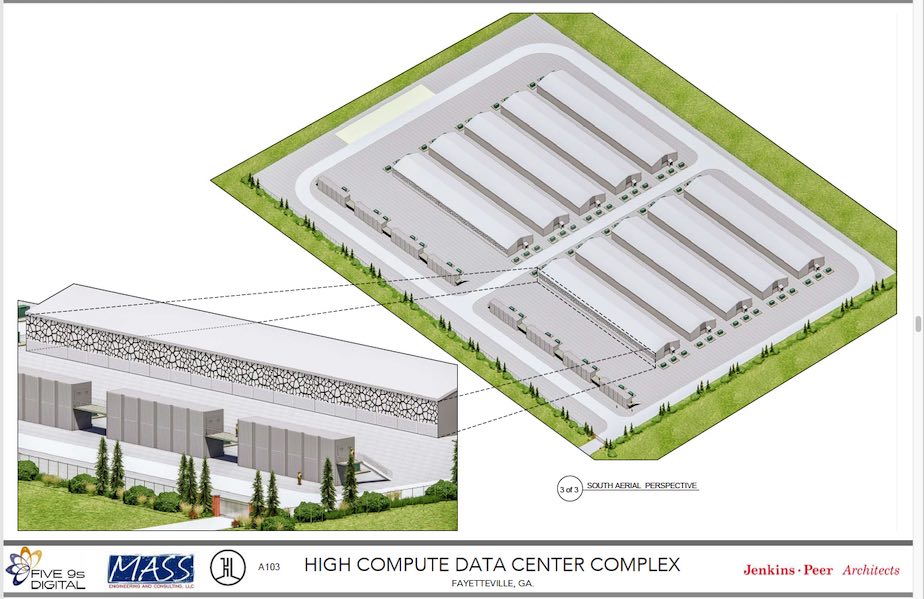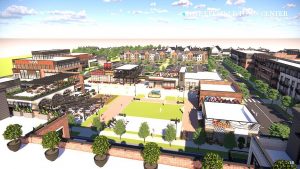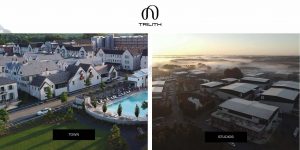The QTS data center construction project zoning is about to get a minor overhaul from the Fayetteville City Council.
One purpose is to clarify exactly what will happen to the current tree buffer separating the large construction area and the adjacent Ga. Highway 54 right of way.
The trees will stay in until after the buildings are constructed. After that, all vegetation will be removed and replaced by berms and fencing.
The second change clarifies that a northern campus access point onto Sandy Creek Road may need further study and permission from the state.
The council will vote on the changes this Thursday, Sept. 21, at Fayetteville City Hall, 210 Stonewall Ave. West, Fayetteville.
In another zoning action, the council will consider modifying the Villages of Lafayette mixed use development to allow any of the 208 “all-suites” hotel rooms to have kitchenettes but prohibit them from containing any appliances like stoves, cooktops, ranges or other cooking appliances.
The development is planned for 30 multi-family apartments to be built on the second, third and fourth floors above retail shops and commercial space at West Lanier Avenue and Tiger Trail.
Also, the new Tesla electric vehicle dealership at 1302 Hwy. 85 North wants to expand. It’s asking to rezone an existing adjacent residential lot to high-intensity commercial to create an overflow parking lot with 296 spaces.
Here’s the zoning change proposed for the data center tract: “It is further understood that existing vegetation within the undisturbed buffer adjoining Highway 54 (only) will remain in place during construction activities to assist in screening building construction, contractor parking, material storage, construction trailers, etc. It is also understood vegetation will be removed from this buffer following construction and the entire area between Highway 54 and the internal roads and buildings will be regraded and enhanced with berms, landscaping, tree replacement, security fencing, and/or to provide a multi-use path connection with new landscaping and other amenities to enhance the appearance and aesthetics of the campus from Highway 54.”
The second change is about a Sandy Creek Road access point: ”The site plan shall provide for a future access point as the northern campus develops, subject to city, county, and state approvals and permits as required. It is understood a proposed shared roadway connection to Sandy Creek Road may warrant further review by the Georgia Regional Transportation Authority and the recommendations within the Notice of Decision associated with DRI #3813. It shall be the sole responsibility of the Applicant to obtain all necessary approvals and permits.”













Leave a Comment
You must be logged in to post a comment.